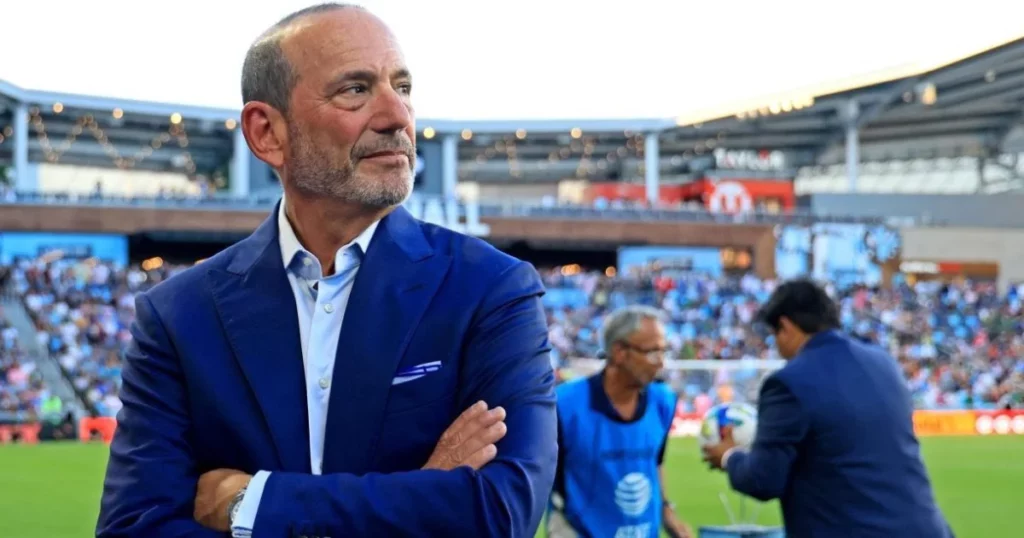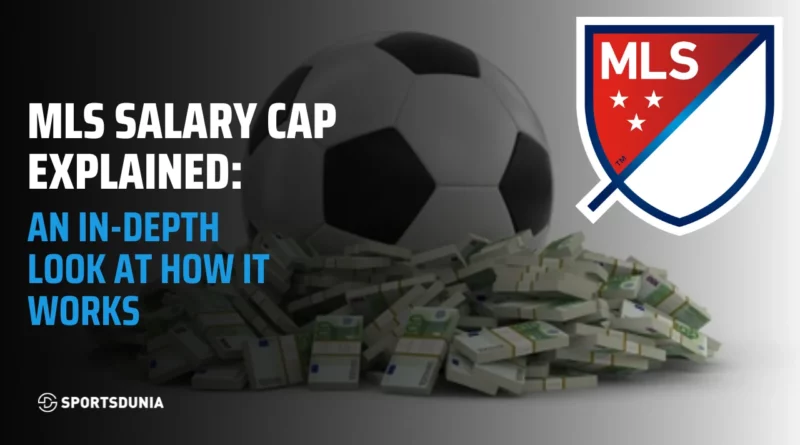What Are MLS Salary Cap Rules and How Does It Work? Take a Look at the Updated Rules in 2025
In terms of massive improvements in a short time, Major League Soccer is one of the big names in the conversation. From star players ending their careers to young talents flourishing and inspiring a generation, the League seems to be going in the right direction.
The MLS salary cap is a crucial component of the structure of the League. It is designed to maintain a competitive balance and financial sustainability among teams. As the league keeps on growing and attracting top talents, understanding the mechanics of the salary cap and its evolution is crucial for both the fans and the stakeholders.
First introduced back in 1996, the MLS salary cap is a mechanism that restricts the total money amount a team can spend on the salaries of their players within a season. The main objective is to promote parity among teams, making sure that the financial disparities do not lead to competitive imbalances. Over the years, the salary cap has evolved to accommodate the growth of the league, the influx of international stars, and the development of a more sophisticated roster structure.
In this article, we will take a deep dive into the salary cap of MLS, its workings in 2025, and the impact it has on teams and various players.
How does MLS Salary Cap Work?

The salary cap of MLS generally operates through a combination of base limits, exceptions, and mechanisms that offer teams flexibility while maintaining overall financial fairness. Let us take a look at how the MLS salary cap works:
- Salary Cap Limit: For the 2025 season, the salary cap is established at $5,950,000 per team, an increase from $5,470,000 in 2024.
- Designated Player Rule: The MLS teams can sign up to three designated players whose salaries exceed the cap limit. In 2025, a DP aged 24 or older carries a max salary budget charge of $743,750, with the possibility to “buy down” this charge using GAM famously known as General Allocation Money.
- GAM (General Allocation Money): It offers teams with financial versatility to get or retain players by enabling them to decrease a player’s salary budget charge. In 2025, clubs might use up to $200,000 of their available GAM to acquire new homegrown players for their first MLS contract.
- Homegrown Players: Youngsters developed through an academy of a team system are considered to be homegrown players. In 2025, teams in MLS can allocate up to $125,000 above the reserve minimum salary for the homegrown players occupying roster spots 21 through 24, promoting investment in youth development.
- Cash for Player Trades: A massive change in 2025 enables teams to trade cash considerations for players, offering greater flexibility in roster construction. However, the cash spent on getting a player via trade counts toward the player’s salary budget charge.
These factors altogether give the Major League Soccer teams the flexibility to develop competitive squads, with larger markets using DPs and money to introduce high-profile players while the smaller-market teams rely on wise signings and domestic talent.
ALSO READ: Where And How To Watch Inter Miami Games Live?
Detailed Breakdown of 2025 Salary Cap
The salary cap of 2025 introduces a lot of updates that are aimed at improving competitiveness and financial flexibility:
- Salary Cap Increase: The salary cap has been raised to $5,950,000 per team. It reflects the growth of the league and financial health.
- Minimum Salary: The minimum salary for players with more than two years of experience is established at $90,000 in 2025. It encourages the teams to retain experienced talent.
- Minimum Team GAM: The MLS teams are required to spend a minimum of $1.3 million in GAM in 2025, making sure investment in player acquisitions and roster improvements.
How much compensation does an individual player get?
The compensation of a player in MLS varies depending on the role, experience, and contractual agreements:
- Designated Players (DPs): The DPs are among the highest-paid folks, with salaries going over the standard cap limits. We can consider the MLS salary cap for Messi for example here. He joined Inter Miami in 2023 on a contract reportedly worth $150 million over two and a half years, making him the highest-paid player in the history of Major League Soccer.
- Standard Players: The players who are not DPs get salaries that fit within the constraints of the salary cap. In 2025, the minimum salary for players with over two years of experience is $90,000. However, actual salaries can change widely depending on negotiations and performance.
- Homegrown Players: Compensation for the homegrown talents varies from one player to the other. However, the teams may allocate extra funds above the minimum to incentivize top talent, particularly those occupying higher roster spots.
What are the maximum and minimum amounts that teams can spend?
In 2025, teams have defined restrictions on spending:
- Maximum Salary: While the salary cap sets a team limit, player salaries might go over this through Designated Player contracts. That being said, only a portion of these salaries count against the cap.
- Minimum Salary: The minimum salary of professionals who have more than two years of experience is $90,000 in 2025. It promotes fair compensation for experienced players.
- Total Team Salary: Teams can go on to spend up to the salary cap limit of $5,950,000 on player salaries. There are specific exceptions like DPs and GAM allocations offering extra flexibility.
- Exceeding the Salary Cap: The MLS teams can exceed the salary cap using mechanisms such as GAM and by signing DPs. However, these spendings are subject to approval from the league and need to have adhered to certain guidelines.
To sum it up, the Major League Soccer salary cap plays a crucial role in shaping the financial landscape of the competition. With updated rules and regulations in 2025, the teams can navigate the challenges of maintaining competitiveness while adhering to financial constraints.
Whether it is attracting top international talents or promoting homegrown talents, the salary cap is there to make sure the league keeps on growing consistently in a sustainable way.
ALSO READ: How Does MLS Playoff Format Works? A Complete Guide
Is there a salary cap in the MLS?
Yes, the MLS salary cap is a key part of the league’s structure. It is designed to maintain competitive balance among the teams.
How much do MLS players get paid?
Generally, the pay varies widely, with the minimum salary for players with more than two years of experience being $90,000 in 2025. However, the high-profile DPs (Designated Players) can earn way more.
Who has the highest-paying MLS contract?
As of right now, Lionel Messi holds the highest-paying contract in Major League Soccer. His salary exceeds the standard salary cap due to his status as a DP.
What is the minimum salary for MLS players in 2025?
For players with more than a couple of years of experience, the minimum salary right now is $90,000.
What is General Allocation Money (GAM)?
GAM or General Allocation Money is a form of financial flexibility that teams may use to help pay down the salaries of a player, facilitating the roster moves and the signings of players.
How many players can an MLS team have on its roster?
Every Major League Soccer team can have a squad of 30 players. However, only 18 players can be part of the game-day squad.
